
EN сталь / TKP EN 1993-4-1-2009
.pdf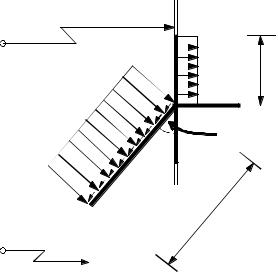
EN 1993-4-1:2007 (Е)
r
pnc lec
pnh
nφh determined here
β
pnh
r - leh sinβ |
leh |
|
Figure 8.5: Local pressures and membrane stress resultant loadings on the transition ring
(10) The maximum design compressive stress σuθ,Ed for the uniformly supported junction should be determined from:
σ uθ ,Ed = |
Nθ ,Ed |
|
... (8.16) |
||||
η Aet |
|||||||
|
|
|
|||||
with: |
|
|
|
|
|
|
|
η = 1 + 0, 3 |
b |
|
... (8.17) |
||||
r |
|||||||
|
|
|
|
||||
where: |
|
|
|
|
|
|
|
Nθ,Ed |
is |
the effective circumferential compressive force, see (9); |
|
||||
Aet |
is |
the total effective area of the ring, see (7); |
|
||||
r |
is |
the radius of the silo cylinder wall; |
|
||||
b |
is |
the width of the annular plate. |
|
||||
8.2.3Transition junction ring girder
(1)For silos in Consequence Class 3, a numerical analysis of the structure should be carried out, that models all plate elements as shell segments, and does not assume prismatic beam action in any curved element. The analysis should take account of the finite width of the discrete supports.
(2)For silos in other Consequence Classes, the bending moments and torques within the ring girder should be calculated, accounting for the eccentricities of loading and support from the ring girder centroid.
(3)The total circumferential compressive thrust developed in the girder should be assumed invariant around the circumference and determined from:
Nθ,Ed = nφh,Ed rc sinβ − pnc rc lec − pnh(cosβ − µsinβ) rc leh |
... (8.18) |
where (see figure 8.5):
76
EN 1993-4-1:2007 (Е)
rc |
is |
the radius of the silo cylinder wall; |
β |
is |
the half angle of the hopper (at the top); |
lec |
is |
the effective length of the cylinder segment above the transition (see 8.2.2 (4)); |
leh |
is |
the effective length of the hopper segment (see 8.2.2 (4)); |
nφh,Ed |
is |
the design value of the meridional tension per unit circumference at the top of |
|
|
the hopper; |
pnc |
is |
the mean local pressure on the effective length of the cylinder segment; |
pnh |
is |
the mean pressure on the effective length of the hopper segment; |
µ |
is |
the hopper wall friction coefficient. |
(4) The variation with circumferential coordinate θ of the design bending moment Mr,Ed about the horizontal (radial) axis (sagging positive) and the design torsional moment Tθ,Ed in the ring girder should be taken as:
Mr,Ed = |
nxc,Ed (rg − er) [(rg − es) θo (sinθ + cotθo cosθ) |
− rg + er] + |
nφh,Ed ex(rg − er) ... |
|||
(8.19) |
|
|
|
|
||
Tθ,Ed = |
nxc,Ed (rg − er) [(rg − es) θo (cotθo sinθ − cosθ) |
+ rg (θo − θ)] |
... (8.20) |
|||
with: |
|
|
|
|
|
|
θ0 |
= |
π |
|
|
|
... (8.21) |
j |
|
|
||||
|
|
|
|
|
||
where (see figure 8.6): |
|
|
||||
θ |
is |
the circumferential coordinate (in radians) measured from an origin at one |
||||
|
|
|
|
support; |
|
|
θo |
is |
the circumferential angle in radians subtended by the half span of the ring |
||||
|
|
|
|
girder; |
|
|
j |
is |
the number of equally spaced discrete supports; |
|
|||
rg |
is |
the radius of the ring girder centroid; |
|
|
||
er |
is |
the radial eccentricity of the cylinder from the ring girder centroid (positive |
||||
|
|
|
|
where the centroid is at a larger radius); |
|
|
es |
is |
the radial eccentricity of the support from the ring girder centroid (positive |
||||
|
|
|
|
where the centroid is at a larger radius); |
|
|
ex |
is |
the vertical eccentricity of the joint centre from the ring girder centroid |
||||
|
|
|
|
(positive where the centroid lies below the joint centre). |
|
|
nxc,Ed |
is |
the design value of compressive membrane stress resultant at the base of the |
||||
|
|
|
|
cylinder: |
|
|
nφh,Ed |
is |
the design value of tensile membrane stress resultant at the top of the hopper. |
||||
(5) The peak values of the design bending moment about the radial axis that occur over the support Mrs,Ed and at midspan Mrm,Ed should be determined from:
Mrs,Ed |
= nxc,Ed (rg − er) [(rg − es) θo cotθo − rg + er] |
+ nφh,Ed ex(rg − er) ... (8.22) |
Mrm,Ed |
= nxc,Ed (r g − er) [(r g − es) θo / sinθo − |
r g + er] + nφh,Ed ex(r g − er) |
... (8.23)
77
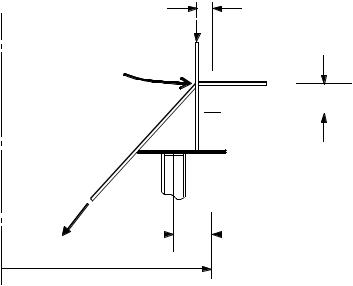
EN 1993-4-1:2007 (Е)
(6) Where an open section ring girder is used, the torque should be assumed to be resisted entirely by warping, unless a more precise analysis is used. Where warping resists the torques, the peak design values of flange moment about a vertical axis in each flange should be taken as given by Mfs,Ed at the support and Mfm,Ed at midspan, obtained as follows:
|
|
rg (rg − er ) |
|
|
2 |
|
|
|
||||
M fs ,Ed |
= nxc,Ed |
(rg |
− es )(1 − θ0 |
cot θ0 ) − |
rgθ0 |
|
|
... (8.24) |
||||
|
|
|
|
|
|
|||||||
|
|
|
h |
|
|
3 |
|
|
|
|||
|
|
|
rg (rg − er ) |
|
|
|
|
|
2 |
|
|
|
M fm,Ed |
= nxc,Ed |
|
(rg |
− es )(1 − θ0 |
/ sinθ0 ) + |
rgθ0 |
|
... (8.25) |
||||
|
|
|
|
|||||||||
|
|
|
h |
|
|
6 |
|
|
|
|||
where h is the vertical separation between the flanges of the ring girder.
|
er |
|
nxc |
|
Cylinder/cone |
|
transition junction |
|
ex |
Axis |
G |
|
Ringbeam effective |
|
section centroid, G |
|
nφh |
|
es |
rg
Figure 8.6: Eccentricities of vertical loads at a ring girder
(7) The circumferential membrane stresses σθ,Ed that develop in each flange of the ring girder should be determined from the thrust Nθ,Ed, radial axis moment Mr,Ed and warping flange moments
Mf,Ed using engineering bending and warping theory and adopting the stress resultants defined in (3) to (6).
(8) The largest value of the circumferential membrane stress (whether tensile or
compressive) that develops in either flange of the ring girder at any position around the circumference should be determined as σmθ,Ed.
(9) The largest compressive value of the circumferential membrane stress σθ,Ed that develops in either flange of the ring girder at any position around the circumference should be determined as
σcθ,Ed.
78
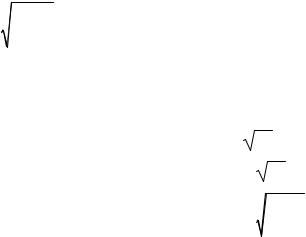
EN 1993-4-1:2007 (Е)
8.3 Structural resistances
8.3.1General
(1) The transition junction should satisfy the provisions of EN 1993-1-6, but these may be met using the following assessments of the design resistance.
8.3.2Resistance to plastic limit state
8.3.2.1General
(1) The design value of the resistance should be determined using the provisions of EN 1993-1-6. The following resistance assessments may be used instead as a simple safe approximation to those provisions.
8.3.2.2Resistance based on elastic evaluation
(1)The design value of the resistance should be determined at the most highly stressed point in the junction.
(2)The design value of the resistance of the plastic limit state should be determined using:
fp,Rd = fy /γM0 |
... (8.26) |
8.3.2.3Resistance based on plastic evaluation
(1)The design value of the resistance should be determined in terms of the attainable tensile membrane stress resultant nφh,Rd in the hopper at the junction.
(2)The design value of the resistance at the plastic limit state nφh,Rd should be determined using:
|
1 |
|
Ap |
+ loctc + losts |
+ lohth |
|
f y |
|
|
|
|
|
|
||||||
nφh,Rd = |
|
|
|
|
|
|
|
|
|
|
|
|
|
+ pncloc + pnh |
(cos β − µ sin β )leh |
||||
|
|
|
|
|
|
|
|
γ M 0 |
|||||||||||
|
|
sin β |
|
r |
|
|
|
|
|
|
|
|
|
||||||
with: |
|
|
|
|
|
|
|
|
|
|
|
|
|
|
|
|
|
|
|
|
|
|
|
|
|
|
t2 |
|
|
|
|
|
|
|
|
|
|
|
|
|
|
|
α = |
|
c |
|
|
|
|
|
|
|
|
|
|
|
|
||
|
|
|
t 2 |
+ t2 |
|
|
|
|
|
|
|
|
|
|
|
||||
|
|
|
|
|
|
|
|
|
|
|
|
|
|
|
|
|
|||
|
|
|
|
|
|
s |
h |
|
|
|
|
|
|
|
|
|
|
|
|
|
|
|
ψ = 0,7 + 0,6α2 - 0,3α3 |
|
|
|
|
|
|
|
|
|
|||||||
- |
for the cylinder |
|
|
|
loc |
= |
0,975 |
r tc |
|||||||||||
- |
for the skirt |
|
|
|
|
|
los |
= |
0,975 ψ |
|
|
r ts |
|||||||
- for the conical hopper segment |
|
loh |
= |
0,975 ψ |
|
|
rth |
|
|||||||||||
|
|
|
cos β |
||||||||||||||||
|
|
|
|
|
|
|
|
|
|
|
|
|
|
|
|
|
|
||
where (see figure 8.5): |
|
|
|
|
|
|
|
|
|
|
|
||||||||
|
|
r |
|
is |
the radius of the silo cylinder wall; |
|
|
|
|
||||||||||
|
|
tc |
|
is |
the thickness of the cylinder; |
|
|
|
|
|
|||||||||
... (8.27)
... (8.28)
... (8.29)
79
|
|
EN 1993-4-1:2007 (Е) |
ts |
is |
the thickness of the skirt; |
th |
is |
the thickness of the hopper; |
Ap |
is |
the cross-sectional area of the ring; |
β |
is |
the half angle of the hopper (at the top); |
loc |
is |
the plastic effective length of the cylinder segment above the transition; |
loh |
is |
the plastic effective length of the hopper segment; |
los |
is |
the plastic effective length of the skirt segment below the transition; |
nφh,Rd |
is |
the meridional membrane resistance per unit circumference at the top of the |
|
|
hopper; |
pnc |
is |
the mean local pressure on the effective length of the cylinder segment; |
pnh |
is |
the mean pressure on the effective length of the hopper segment; |
µ |
is |
the hopper wall friction coefficient. |
8.3.3Resistance to in-plane buckling
(1)The design value of the resistance should be determined using the provisions of EN 1993-1-6. The following resistance assessment may be used instead as a simple safe approximation to those provisions.
(2)The design value of the resistance should be assessed using the point in the junction where the highest compressive circumferential membrane stress occurs.
(3)The design value of the resistance against in-plane buckling σip,Rd should be determined using:
σ ip,Rd =
where:
EIz |
is |
Aet |
is |
rg |
is |
4EI z |
|
|
1 |
... (8.30) |
|
A r2 |
γ |
M 1 |
|||
|
|
||||
et g |
|
|
|
the flexural rigidity of the ring effective cross-section (see figure 8.3) about its vertical axis;
the effective cross-sectional area of the ring, given by 8.2.2; the radius of the centroid of the ring effective cross-section.
(4) The above resistance assessment and the associated verification against in-plane bucking of 8.4 may be omitted when the cone half angle β is greater than βlim.
NOTE: The National Annex may choose the value of βlim. The value βlim = 20° is recommended.
8.3.4Resistance to out-of-plane buckling and local shell buckling near the junction
8.3.4.1General
(1) The design value of the resistance should be determined using the provisions of EN 1993-1-6. The following resistance assessments may be used instead as a simple safe approximation to those provisions.
80
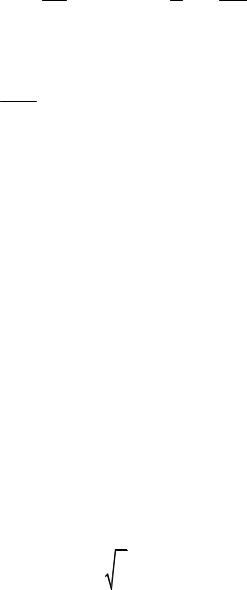
EN 1993-4-1:2007 (Е)
8.3.4.2Local shell buckling near the junction
(1) |
|
r |
for the conical hopper wall |
|
|
|
|||
rs = |
|
|
|
||||||
|
cos β |
|
|
|
|
|
|
|
|
r |
is |
the radius of the silo cylinder wall; |
|
||||||
β |
is |
the hopper apex half angle; |
|
|
|
|
|||
t |
is |
the thickness of the relevant shell segment; |
|
||||||
Aet |
is |
the effective cross-sectional area of the ring, given by 8.2.2; |
|
||||||
rg |
is |
the radius of the centroid of the ring effective cross-section. |
|
||||||
For junctions in which there is either no ring at the transition (simple cone to cylinder junction), |
|||||||||
or the transition is ring stiffened. the design value of the resistance σop,Rd against shell buckling of the |
|||||||||
wall adjacent to the junction should be determined using: |
|
|
|||||||
|
|
|
1 |
|
1,5 |
|
Etr |
|
|
|
|
σ op,Rd = |
4,1(cos β )0,4 t |
|
|
g |
|
... (8.31) |
|
|
|
|
γ M 1 |
rs |
|
Aet |
|
||
with:
rs = r for the cylindrical wall
where:
8.3.4.3Annular plate transition junction
(1) For junctions in which the ring at the transition is in the form of an annular plate, the design value of the resistance against out-of-plane buckling σop,\,Rd should be determined using:
|
|
tp 2 |
1 |
|
||||
σ op,Rd |
= kE |
|
|
|
|
|
... (8.32) |
|
|
|
|
||||||
|
|
b |
|
|
γ M 1 |
|||
with: |
|
|
|
|
|
|
|
|
k = |
ηckc +ηsks |
|
|
|
... (8.33) |
|||
|
|
|
||||||
|
|
ηc +ηs |
|
|
|
|
||
ks |
= |
0,385 + 0,452 |
|
b |
|
... (8.34) |
|||
|
|
|
|
||||||
r |
|
||||||||
|
|
|
|
|
|
|
|
||
kc |
= |
1,154 + 0,56 |
|
b |
|
|
|
... (8.35) |
|
r |
|
||||||||
|
|
|
|
|
|
||||
ηs |
|
r |
2 |
|
|||||
= |
0,43 + 0,1 |
|
|
|
... (8.36) |
||||
|
|||||||||
|
|
20b |
|
|
|||||
81
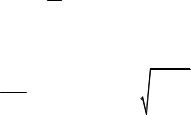
|
|
|
|
|
|
|
|
|
|
|
|
|
|
|
|
EN 1993-4-1:2007 (Е) |
|
|
|
t |
c |
5 / 2 |
t |
s |
5 / 2 |
t |
h |
5 / 2 |
|
|
|||
η |
|
= 0,5 |
|
|
|
+ |
|
|
+ |
|
|
|
... (8.37) |
|||
|
|
|
|
|
|
|
||||||||||
|
c |
|
t |
|
|
t |
|
|
t |
|
|
|
|
|||
|
|
|
|
|
|
|
|
|
|
|
|
|
|
|||
|
|
|
|
p |
|
|
|
p |
|
|
|
p |
|
|
|
|
|
|
|
|
|
|
|
|
|
|
|
|
|
|
|||
where: |
|
|
|
|
|
|
|
|
|
|
|
|
|
|
|
|
r |
|
is |
the radius of the silo cylinder wall; |
|
||||||||||||
tc |
|
is |
the thickness of the cylinder; |
|
|
|||||||||||
ts |
|
is |
the thickness of the skirt; |
|
|
|
|
|||||||||
th |
|
is |
the thickness of the hopper. |
|
|
|||||||||||
tp |
|
is |
the thickness of the annular plate ring; |
|
||||||||||||
b |
|
is |
the width of the annular plate ring; |
|
||||||||||||
kc |
|
is |
the plate buckling coefficient for a ring with clamped inner edge; |
|||||||||||||
ks |
|
is |
the plate buckling coefficient for a ring with simply supported inner edge; |
|||||||||||||
γM1 |
|
is |
the partial factor, see 2.9.2. |
|
|
|||||||||||
8.3.4.4T section transition junction
(1) The following assessment should be used where the transition junction ring consists of an annular plate of width bp with a symmetrically placed vertical stiffening flange of height bf at its outer edge, forming a T section ring with the base of the T at the joint centre.
(2) The design value of the resistance against out-of-plane buckling σop,Rd of a T-section ring beam should be determined on the basis of the maximum compressive value of the circumferential membrane stress on the inner edge of the principal annular plate of the ring. The design value of the resistance should be determined from:
σ |
|
= |
ηsσ s + ηcσ c |
|
1 |
|
op,Rd |
|
|
||||
|
|
ηs |
+ ηc |
|
γ M 1 |
|
|
|
|
|
|||
with:
|
|
r |
2 |
η = 0,385 + |
|
|
|
|
|||
s |
175bp |
|
|
|
|||
ηc
σ s
t
= 0,5 c
t p
=EIr 0, 2
Ar02
5 / 2 |
|
t |
s |
5 / 2 |
|
t |
h |
|
5 / 2 |
|
||||||||
|
|
+ |
|
|
|
+ |
|
|
|
|
|
|||||||
|
|
|
|
|
|
|
|
|
||||||||||
|
|
|
t |
|
|
|
|
|
t |
|
|
|
|
|
||||
|
|
|
|
|
|
|
|
|
|
|
|
|
|
|
||||
|
|
|
|
|
|
p |
|
|
|
|
|
p |
|
|
|
|
||
|
|
|
|
|
|
|
|
|
|
|
|
|
|
|
||||
bp |
|
|
GI |
t |
|
|
|
|
|
GIt bp |
|
|
||||||
|
+ |
|
|
|
|
+ 2 |
|
|
|
|
|
|
|
|
|
|||
|
|
|
|
|
|
|
|
|
|
|
|
|
|
|||||
r |
|
|
EI r |
|
|
|
|
|
EIr r |
|
|
|
|
|||||
|
|
|
|
|
|
|
|
|
|
|
||||||||
|
t |
p |
1,1 |
|
(1 + 5ρ )(1 + 32ρ − 16ρ 2 ) |
||||
σ = |
E |
|
|
|
|
|
|
|
|
|
|
|
|
|
|
||||
p |
|
|
|
|
|
b t |
|
|
|
|
bp |
|
f |
||||||
|
|
|
|
|
|
64 1 + 5 |
f |
|
|
|
|
|
|
|
|
|
|
||
|
|
|
|
|
|
|
|
|
|
|
|
|
|
|
|
|
bpt p |
||
... (8.38)
... (8.39)
... (8.40)
... (8.41)
... (8.42)
82
EN 1993-4-1:2007 (Е)
r2 |
|
|
|
I |
r |
+ I |
z |
+ Ax2 |
|
||||
= |
|
|
|
|
|
|
c |
|
... (8.43) |
||||
|
|
|
|
|
|
|
|
|
|
|
|||
o |
|
|
|
|
|
|
|
|
A |
|
|||
|
|
|
|
|
|
|
|
|
|
||||
|
|
|
b |
|
t |
f |
|
|
1/ 3 |
|
|||
ρ = |
|
|
f |
|
|
|
|
|
... (8.44) |
||||
|
|
|
|
|
|
|
|
||||||
|
|
|
bp tp |
|
|||||||||
where: |
|
|
|
|
|
|
|
|
|
|
|
|
|
r |
|
is |
|
|
the radius of the silo cylinder wall; |
|
|||||||
tc |
|
is |
|
|
the thickness of the cylinder; |
|
|||||||
ts |
|
is |
|
|
the thickness of the skirt; |
|
|||||||
th |
|
is |
|
|
the thickness of the hopper. |
|
|||||||
tp |
is |
|
|
the thickness of the annular plate ring; |
|
||||||||
tf |
|
is |
|
|
the thickness of the outer vertical flange of the T section; |
|
|||||||
bp |
|
is |
|
|
the width of the annular plate ring; |
|
|||||||
bf |
|
is |
|
|
the height (flange width) of the outer vertical flange of the T section; |
||||||||
A |
|
is |
|
|
the cross-sectional area of the T-section ring beam; |
|
|||||||
xc |
|
is |
|
|
the distance between the centroid of the T-section and its inner edge; |
||||||||
Ir |
|
is |
|
|
the second moment of area of the T-section about its radial axis; |
|
|||||||
Iz |
|
is |
|
|
the second moment of area of the T-section about its vertical axis; |
|
|||||||
It |
|
is |
|
|
the uniform torsion constant for the T-section; |
|
|||||||
γM1 |
|
is |
|
|
the partial factor, see 2.9.2. |
|
|||||||
8.4 Limit state verifications
8.4.1Uniformly supported transition junctions
(1)Where the silo has been analysed using a computer analysis, the procedures of EN 1993-1-6 should be used. Where the computer analysis does not include a buckling analysis, section 8.3 may be used to provide the buckling resistances for the limit state verification in EN 1993-1-6.
(2)Where the silo is supported on a skirt extending to a uniform foundation (see 5.4.2) and the calculations of 8.2 have been carried out, the transition junction may be deemed to be subject only to a
uniform circumferential membrane stress σuθ,Ed as determined in 8.2.2 (10). The following limit state verifications should then be carried out.
(3) Where the plastic limit state is assessed using an elastic evaluation, the plastic limit state for the junction should be verified using:
σuθ,Ed ≤ |
fp,Rd |
... (8.45) |
|
where: |
|
|
|
σuθ,Ed |
is |
the design value of the stress taken from 8.2.2 (10); |
|
fp,Rd |
is |
the design value of the plastic resistance taken from |
8.3.2.2. |
(4) Where the plastic limit state is assessed using a plastic evaluation, the plastic limit state for the junction should be verified using:
nφh,Ed ≤ nφh,Rd |
... (8.46) |
where:
83
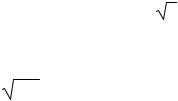
|
|
EN 1993-4-1:2007 (Е) |
nφh,Ed |
is |
the design value of the meridional membrane stress resultant at the top of the |
|
|
hopper; |
nφh,Rd |
is |
the design value of the plastic resistance taken from 8.3.2.3. |
(5)The in-plane buckling limit state for the junction should be verified using:
σuθ,Ed |
≤ σip,Rd |
... (8.47) |
|
where: |
|
|
|
σuθ,Ed |
is |
the design value of the stress taken from 8.2.2 (10); |
|
σip,Rd |
is |
the design value of the in-plane buckling resistance taken from |
8.3.3. |
(6) The limit state verification against in-plane buckling may be omitted if both of the following conditions are met:
− |
the cone half angle β is greater than βlim and there is a cylinder above the ring; |
− |
where the cylinder has a height L less than Lmin = kL rt , the upper boundary of the cylinder is |
|
restrained against out-of-round displacements by a ring with a flexural rigidity EIz about its |
|
vertical axis (circumferential bending) greater than: |
|
EIz,min |
= kR E (rt)2 (t/r) |
... (8.48) |
where: |
|
|
|
t |
is |
the thickness of the thinnest strake in the cylinder. |
|
NOTE 1: The National Annex may choose the values of βlim, kL and kR. The values βlim = 10°, kL = 10 and kR = 0,04 are recommended.
NOTE 2: The requirement that the top of the cylinder should be restrained to remain circular is only relevant for short cylinders above the transition ring, since taller cylinders provide sufficient restraint against this mode of buckling without being themselves restrained to remain circular.
(7)The out-of-plane buckling limit state for the junction should be verified using:
σuθ,Ed |
≤ σop,Rd |
... (8.49) |
|
where: |
|
|
|
σuθ,Ed |
is |
the design value of the stress taken from 8.2.2 (10); |
|
σop,Rd |
is |
the appropriate design value of the out-of-plane buckling resistance taken from |
|
|
|
8.3.4. |
|
8.4.2Transition junction ring girder
(1)Where the silo has been analysed using a computer analysis, the procedures of EN 1993-1-6 should be used. Where the computer analysis does not include a buckling analysis, section 8.3 may be used to provide the buckling resistances for the limit state verification in EN 1993-1-6.
(2)Where the silo is discretely supported, so that the transition junction acts as a ring girder with circumferential membrane stresses which vary across the section and around the circumference, this variation should be taken into account in the limit state verifications. Where the calculations of 8.2 have been carried out, the following limit state verifications should be undertaken.
(3)The plastic limit state for the junction should use the evaluated stress σmθ,Ed from 8.2.3 (8) and should be verified using:
84
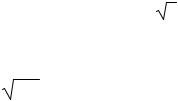
EN 1993-4-1:2007 (Е)
σmθ,Ed |
≤ fp,Rd |
... (8.50) |
|
where: |
|
|
|
σmθ,Ed |
is |
the design value of the stress taken from 8.2.3 (8); |
|
fp,Rd |
is |
the design value of the plastic resistance taken from |
8.3.2.2. |
(4)The in-plane buckling limit state for the junction should use the evaluated stress σcθ,Ed from
8.2.3(9) and should be verified using:
σcθ,Ed ≤ σip,Rd |
... (8.51) |
||
where: |
|
|
|
σcθ,Ed |
is |
the design value of the stress taken from 8.2.3 (9); |
|
σip,Rd |
is |
the design value of the in-plane buckling resistance taken from |
8.3.3. |
(5) The limit state verification against in-plane buckling may be omitted if both of the following conditions are met:
− the cone half angle β is greater than βlim and there is a cylinder above the ring;
− where the cylinder has a height L less than Lmin = kL |
rt , the upper boundary of the cylinder is |
||
restrained against out-of-round displacements by a ring with a flexural rigidity EIz about its |
|||
vertical axis (circumferential bending) greater than: |
|
||
|
EIz,min |
= kR E (rt)2 (t/r) |
... (8.52) |
where: |
|
|
|
t |
is |
the thickness of the thinnest strake in the cylinder; |
|
L |
is |
the height of the shell wall above the ring. |
|
NOTE 1: The National Annex may choose the values of βlim, kL and kR. The values βlim = 10°, kL = 10 and kR = 0,04 are recommended.
NOTE 2: The requirement that the top of the cylinder should be restrained to remain circular is only relevant for short cylinders above the ring, since taller cylinders provide sufficient restraint against this mode of buckling without being themselves restrained to remain circular.
(6)The out-of-plane buckling limit state for the junction should use the evaluated stress σcθ,Ed
from 8.2.3 (9) and should be verified using:
σcθ,Ed ≤ σop,Rd |
... (8.53) |
||
where: |
|
|
|
σcθ,Ed |
is |
the design value of the stress taken from 8.2.3 (9); |
|
σop,Rd |
is |
the design value of the out-of-plane buckling resistance taken from |
8.3.4. |
8.5 Considerations concerning support arrangements for the junction
8.5.1Skirt supported junctions
(1) Where the silo is supported on a skirt extending to a uniform foundation (see 5.4.2), the transition junction may be deemed to carry only circumferential membrane stresses.
85
